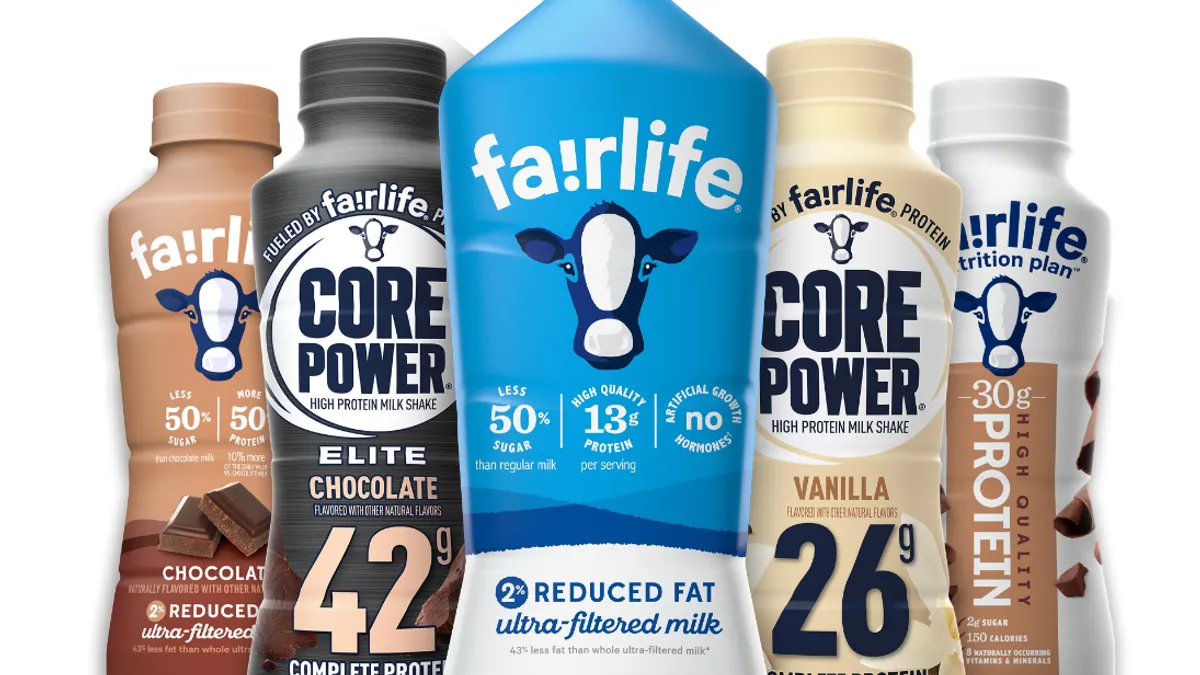introduction to fairlife milk
In recent years, the dairy industry has seen a surge in innovative products that cater to the health-conscious consumer. One of the standout offerings is Fairlife Milk, a brand that has captured the attention of many for its unique processing methods and nutritional benefits. In this comprehensive guide, we’ll dive into what makes Fairlife Milk special, its nutritional profile, potential health benefits, and how it stacks up against traditional milk. By the end, you’ll have a thorough understanding of why is becoming a staple in many households.
What is Fairlife Milk?

Fairlife Milk is a brand of ultra-filtered milk that was first introduced in 2015. Produced by Fairlife, LLC, a subsidiary of The Coca-Cola Company, Fairlife Milk is distinct from regular milk due to its unique filtration process. This process separates the milk into its various components: water, protein, fat, and lactose. By doing so, Fairlife Milk can be fortified with additional nutrients and tailored to meet specific dietary needs.
The brand prides itself on providing a high-quality product that is free from artificial hormones, antibiotics, and gluten. Fairlife sources its milk from dairy farms that adhere to strict animal welfare standards, ensuring that the cows are treated ethically. This commitment to quality and sustainability is a significant part of Fairlife’s appeal, especially among consumers who prioritize ethical food sourcing.
Fairlife Milk comes in various forms, including whole, 2%, 1%, and skim milk, as well as lactose-free options. This range allows consumers to choose a product that fits their dietary preferences while still benefiting from the unique qualities of Fairlife’s ultra-filtered milk.
The Filtration Process: How Fairlife Milk is Made
At the heart of Fairlife Milk’s unique qualities is its innovative ultra-filtration process. This method sets Fairlife apart from conventional milk and contributes to its higher protein content, lower sugar levels, and longer shelf life. Let’s take a closer look at how this process works.
Step 1: Separation of Components
The ultra-filtration process begins by separating milk into its core components: water, lactose, protein, and fat. This is achieved using a specialized filter that allows for the selective passage of molecules based on their size. The result is a concentrated mixture of protein and nutrients while reducing the amount of lactose and sugar.
Step 2: Fortification
Once the milk is separated, Fairlife has the opportunity to fortify it with additional nutrients. This means they can enhance the nutritional profile of the milk by adding vitamins and minerals, such as vitamin D and calcium. The ability to fortify the milk sets Fairlife apart from traditional dairy products, which typically come with a standard nutritional profile.
Step 3: Blending and Packaging
After fortification, the components are blended back together in precise ratios to create the desired milk product. This blending process ensures that each carton of Fairlife Milk maintains a consistent taste and nutritional profile. The final product is then pasteurized to eliminate any harmful bacteria, ensuring it is safe for consumption. Finally, Fairlife Milk is packaged in recyclable containers, aligning with the brand’s commitment to sustainability.
This ultra-filtration process not only results in a milk product that is rich in protein and low in sugar, but it also extends the shelf life of the milk. Fairlife Milk can last up to 90 days in the fridge, making it a convenient option for busy households.
Nutritional Profile of Fairlife Milk
One of the key reasons consumers are gravitating toward Fairlife Milk is its impressive nutritional profile. Understanding the nutritional content can help you make informed decisions about incorporating it into your diet. Here’s a breakdown of what you can expect from Fairlife Milk:
High Protein Content
Fairlife Milk boasts a significantly higher protein content than traditional milk. For example, a cup of Fairlife 2% milk contains approximately 13 grams of protein, compared to about 8 grams in a cup of regular 2% milk. This makes Fairlife Milk an excellent choice for those looking to increase their protein intake, such as athletes or individuals engaged in regular exercise.
Lower Sugar Levels
Another notable feature of Fairlife Milk is its reduced sugar content. The ultra-filtration process removes a significant portion of lactose, resulting in milk that is lower in sugar compared to conventional options. For example, a cup of Fairlife 2% milk contains about 6 grams of sugar, while regular 2% milk has around 12 grams. This makes Fairlife Milk a favorable option for those managing their sugar intake or seeking to reduce their overall carbohydrate consumption.
Enhanced Nutrients
In addition to its higher protein and lower sugar content, Fairlife Milk is often fortified with essential vitamins and minerals. This includes vitamin D, calcium, and potassium, all of which play crucial roles in maintaining bone health and overall well-being. The combination of these nutrients makes Fairlife Milk a nutrient-dense choice for individuals of all ages.
Comparison with Traditional Milk
To further illustrate the nutritional advantages of Fairlife Milk, let’s compare its composition with that of traditional milk. In a side-by-side comparison, you can see the differences in protein, sugar, and calorie content.
Nutritional Content (per cup)Fairlife 2% MilkRegular 2% Milk
Protein 13g 8g
Sugar 6g 12g
Calories 120 130
Calcium 30% DV 28% DV
Vitamin D 25% DV 15% DV
This table highlights how Fairlife Milk offers a more robust nutritional profile than traditional milk, making it an appealing option for health-conscious consumers.
Health Benefits of Fairlife Milk
With its unique processing method and nutritional advantages, Fairlife Milk may offer several health benefits. While individual responses to dairy products can vary, many consumers find that incorporating Fairlife Milk into their diets supports their overall health in various ways.
Support for Muscle Growth and Repair
Due to its high protein content, Fairlife Milk is an excellent option for those looking to build muscle or recover after workouts. Protein plays a critical role in muscle repair and growth, making it an essential nutrient for athletes and active individuals. Consuming protein-rich foods, such as Fairlife Milk, after exercise can help improve muscle recovery and support lean muscle mass development.
Weight Management
For individuals aiming to maintain or lose weight, Fairlife Milk may be beneficial due to its higher protein and lower sugar content. Protein has been shown to promote feelings of fullness, which can help control appetite and reduce overall calorie intake. By replacing higher-sugar beverages with Fairlife Milk, consumers may find it easier to manage their weight while still enjoying a delicious and satisfying drink.
Lactose Intolerance Friendly
Fairlife offers a lactose-free version of its milk, making it a suitable option for individuals with lactose intolerance. This product provides the same nutritional benefits as regular Fairlife Milk but without the discomfort associated with lactose digestion. As a result, those who have previously avoided dairy due to lactose intolerance can enjoy the taste and benefits of milk without any adverse effects.
Bone Health
The combination of calcium and vitamin D in Fairlife Milk supports bone health, making it an excellent choice for individuals looking to maintain strong bones. Calcium is essential for bone density, while vitamin D helps with calcium absorption. This is particularly important for children, adolescents, and older adults, who are at higher risk for osteoporosis and other bone-related issues.
How to Incorporate Fairlife Milk into Your Diet
With its versatile nature and appealing taste, Fairlife Milk can be easily integrated into various meals and snacks. Here are some ideas to help you incorporate Fairlife Milk into your daily routine.
Breakfast Options
Start your day right by adding Fairlife Milk to your breakfast. Whether you prefer oatmeal, smoothies, or cereal, using Fairlife Milk can enhance the nutritional content of your morning meal. For a quick and nutritious smoothie, blend Fairlife Milk with your favorite fruits, spinach, and a scoop of protein powder for a delicious, nutrient-packed start to your day.
Cooking and Baking
Fairlife Milk can be used as a substitute for regular milk in cooking and baking. From creamy sauces to baked goods, Fairlife Milk can provide the same rich flavor with added nutritional benefits. Try using it in recipes for pancakes, muffins, or creamy soups to give your dishes a protein boost.
Beverages and Snacks
For a refreshing beverage, consider enjoying Fairlife Milk on its own or mixed with your favorite flavorings, such as chocolate or vanilla. You can also use it as a base for hot beverages, like lattes or hot chocolate, to create a delicious and satisfying drink. Additionally, Fairlife Milk pairs well with snacks like fruit or granola, making it a perfect choice for a mid-afternoon pick-me-up.
Fairlife Milk: A Sustainable Choice
In today’s world, consumers are increasingly concerned about the sustainability of the products they purchase. Fairlife Milk addresses these concerns through its commitment to ethical farming practices and environmental responsibility.
Ethical Sourcing
Fairlife sources its milk from family-owned dairy farms that adhere to strict animal welfare standards. This means that the cows are treated humanely and given the proper care they need to thrive. By supporting Fairlife, consumers can feel confident that they are choosing a product that aligns with their values regarding animal welfare.
Environmental Initiatives
Fairlife is also committed to reducing its environmental impact. The brand implements various sustainability initiatives, such as utilizing recyclable packaging and working to minimize water usage during production. By choosing Fairlife Milk, consumers are contributing to a more sustainable food system.
Community Involvement
Fairlife actively engages in community initiatives, supporting local farmers and investing in projects that benefit both the environment and society. This commitment to community involvement helps foster a more sustainable food ecosystem, making Fairlife a brand that consumers can trust.
Comparing Fairlife Milk with Other Dairy Alternatives
As the market for dairy alternatives continues to grow, many consumers are left wondering how Fairlife Milk compares to non-dairy options such as almond milk, soy milk, and oat milk. Each type of milk has its unique qualities, and understanding these differences can help you choose the right product for your dietary needs.
Nutritional Comparison
When comparing with dairy alternatives, it’s essential to look at the nutritional content. Here’s a brief overview of how stacks up against some popular non-dairy options:
Nutritional Content (per cup)Fairlife 2% MilkAlmond Milk (Unsweetened)Soy Milk (Unsweetened)Oat Milk (Unsweetened)
From this table, it’s clear that offers a higher protein content compared to most dairy alternatives, making it a superior choice for those looking to increase their protein intake. However, almond milk and other non-dairy options are often lower in calories, making them appealing to those seeking lighter alternatives.
Taste and Texture
has a rich, creamy texture that many consumers appreciate. Its taste is similar to traditional milk, making it an easy transition for those who may be hesitant to switch from dairy. On the other hand, non-dairy options like almond and oat milk have distinct flavors that may not appeal to everyone. When selecting a milk alternative, consider your taste preferences and how you plan to use the product.
Dietary Restrictions
is a great choice for those without lactose intolerance or dairy allergies. In contrast, non-dairy alternatives cater to a broader range of dietary restrictions, as they are naturally lactose-free and often vegan. If you have specific dietary needs, it’s crucial to choose a product that aligns with your lifestyle.
Addressing Common Myths About Fairlife Milk
Despite its popularity, some misconceptions surround Let’s address a few common myths to provide clarity for consumers.
Myth 1: Fairlife Milk is Processed and Unhealthy
While undergoes a unique filtration process, this does not mean it is unhealthy. The ultra-filtration method enhances its nutritional profile by increasing protein content and reducing sugar levels. is free from artificial hormones and antibiotics, making it a healthy choice for consumers.
Myth 2: Fairlife Milk is Only for Athletes
Although is a popular choice among athletes due to its high protein content, it is suitable for anyone looking to improve their nutrition. Whether you are a busy parent, a health-conscious individual, or simply someone who enjoys the taste of milk, Fairlife offers a delicious and nutritious option for all.
Myth 3: Fairlife Milk is Not Environmentally Friendly
Fairlife is committed to sustainability and ethical sourcing. The brand prioritizes animal welfare and engages in environmentally responsible practices. Consumers can feel confident that choosing supports a more sustainable food system.
Conclusion: Is Fairlife Milk Right for You?
offers a unique and nutritious alternative to traditional dairy products. With its high protein content, lower sugar levels, and commitment to ethical sourcing and sustainability, it is no wonder that Fairlife has gained a loyal following among health-conscious consumers.
Incorporating into your diet can provide numerous benefits, from supporting muscle growth to promoting bone health. Whether you’re using it in smoothies, cooking, or enjoying it on its own, is a versatile option that fits seamlessly into various dietary preferences.
As with any food product, it’s essential to consider your individual needs and preferences. If you’re looking for a nutritious, delicious, and ethically sourced milk option, may be the perfect fit for you. Give it a try and experience the benefits for yourself!


